When two UN atomic watchdog inspectors set off for Iran’s Fordow nuclear plant in January, they gave virtually no notice of the impending visit.
It was what the International Atomic Energy Agency terms a routine unscheduled inspection, designed to give staff at one of the Islamic republic’s most secretive facilities as little time as possible to make any alterations to equipment.
On this occasion, they would make an alarming discovery. After the inspectors donned laboratory coats and descended into Fordow, built deep beneath a mountain 30km north of the city of Qom to protect against US or Israeli bombs, they were immediately given cause for concern.
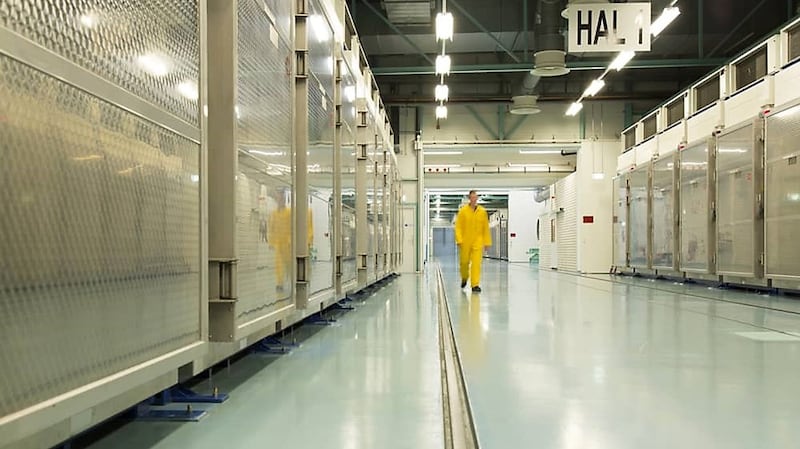
Two “cascades” of advanced centrifuges enriching uranium were configured in a way that “substantially” differed from what Iran’s nuclear authorities had declared to the IAEA, the agency reported.
READ MORE
The discovery prompted a brief back and forth between the inspectors and the Iranian scientists, who insisted nothing had changed. The IAEA experts returned the next day and took samples of dust from the area, which were flown back to the watchdog’s Vienna headquarters.
[ Netanyahu says diplomacy has failed to stop Iran’s nuclear threatOpens in new window ]
After its scientists examined the particles, the IAEA made a finding that would shock the outside world. The uranium in the dust was enriched to a purity of up to 83.7 per cent, by far the highest level detected in Iran. The finding suggested Tehran was closer than ever to having the capacity to produce nuclear weapons.
It was the latest evidence of just how far Iran’s nuclear programme has advanced since the US, under president Donald Trump, unilaterally pulled out of the accord Tehran signed in 2018 with world powers, known as the Joint Comprehensive Plan of Action (JCPOA).
In the five years since, the Islamic republic has been locked in a dangerous game of brinkmanship with Washington – and Iran is now on the threshold of becoming a nuclear state.
General Mark Milley, chairman of the US joint chiefs of staff, told a Senate hearing in March that Iran “could produce enough fissile material for a nuclear weapon in approximately 10-15 days and it would only take several months to produce an actual nuclear weapon”.
It is a crisis that has left western diplomats struggling to come up with viable options to reverse or at least stem the advances, amid fears that the current path is unsustainable and risks triggering the Middle East’s next conflict.
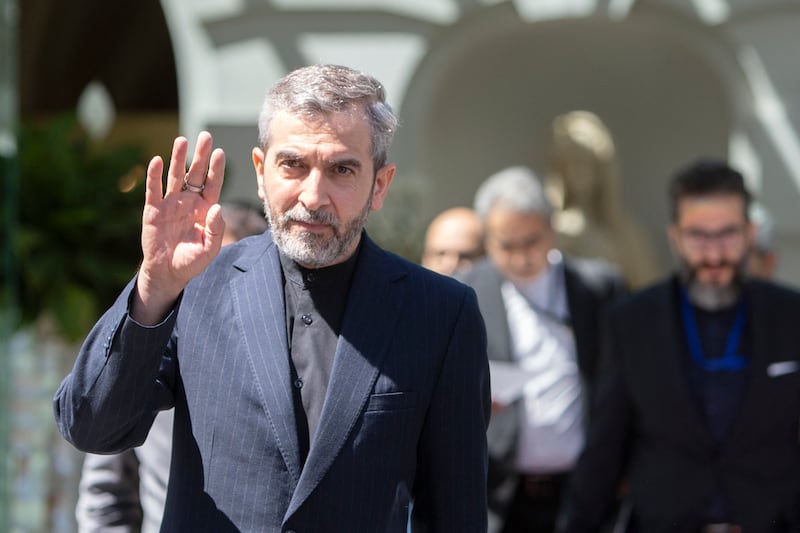
A temporary fix
In recent months, officials in Europe and the US have quietly resumed discussions.
Officials from the so-called E3 – France, Germany and the UK – also met Ali Bagheri Kani, Iran’s nuclear negotiator, in Oslo in March. Separately, Bagheri Kani said he met E3 officials in Abu Dhabi this month.
Talks between the US and Iran, meanwhile, emerged out of heightened tensions in the first quarter of the year. An American contractor was killed by an Iranian-built drone in Syria, and the US retaliated with an airstrike on a facility used by Iran’s elite Revolutionary Guards, which killed Iranian-affiliated fighters.
After that exchange, the US got indications from Iran that it was interested in discussions to defuse tensions and seemed more serious about finding solutions, according to a source familiar with the matter.
Following indirect talks between the US and Iran in Oman in May, Tehran indicated it was willing to take nuclear steps that would indicate that they are stepping back somewhat, the person says. Washington is waiting to see whether Tehran will do so.
But the US has let Iran know that it sees anything above 60 per cent enrichment as “a march toward weaponisation”, the source says, adding that the administration communicated that proceeding down that path would yield serious consequences.
US officials have simultaneously been focusing on a potential prisoner-exchange with Iran, which is holding at least three American dual-nationals on various charges. Rob Malley, the US’s Iran envoy, has held talks several times with Iran’s UN ambassador, Amir Saeid Iravani.
“For the Americans, it’s important to have something happening on prisoners and the nuclear issue at the same time,” a senior foreign diplomat says. “A prisoner-exchange could help unlock the nuclear negotiations.”
Few officials believe it is still possible to revive the JCPOA, under which Iran agreed to stringent limits on its nuclear activity and strict IAEA monitoring in return for sanctions relief. Instead, the best hope, diplomats say, is an interim deal to ease certain sanctions in exchange for Iran reducing some of its nuclear activities, but without requiring approval by the US Congress, or other de-escalatory measures.
Iran’s “very dangerous nuclear steps” have helped provide some impetus to renewed diplomacy, says Henry Rome, a senior fellow at the Washington Institute for Near East Policy. The discovery of the 83.7 per cent enriched particles was a “dramatic demonstration of where things could end up if there’s not some effort to turn down the temperature”, he adds.
But the reality of Iran’s growing stockpile of highly enriched uranium means the stakes are rising dangerously. Pentagon officials worry about an escalation causing the US to stumble into a conflict.
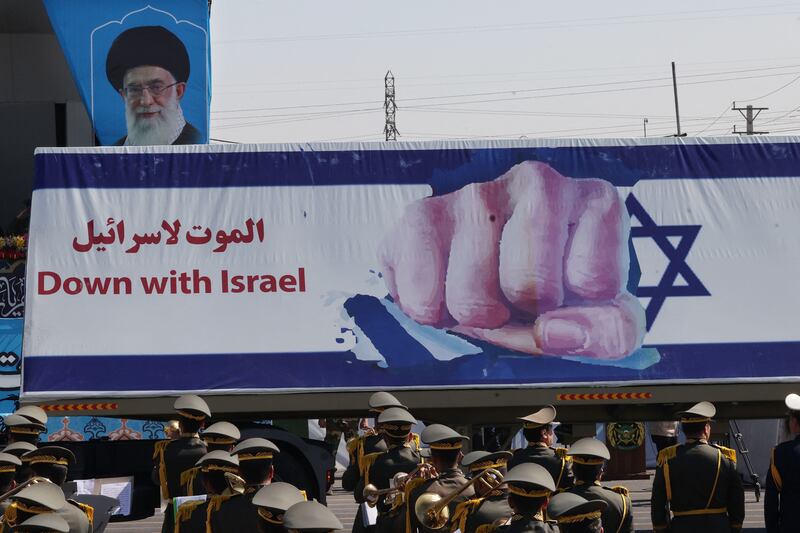
Israel has stepped up warnings that it will do whatever it considers necessary to prevent Iran from acquiring a nuclear weapon, fuelling concerns about whether it would risk striking Iran. Israeli prime minister Binyamin Netanyahu said last week that his country would “do whatever we need to do in order to defend ourselves, with our own forces, against any threat”.
“Given how advanced Iran’s nuclear programme is, Tehran has very little space to escalate without tripping US and Israeli red lines,” says Kelsey Davenport, director for non-proliferation policy at the Arms Control Association.
But exactly what Iran will agree to is the question that has been dogging US and European diplomats as they have renewed discussions.
If Iran can move quickly to produce enough material for multiple bombs, and move that material to a number of covert sites, it’s much more challenging to disrupt that process
— Kelsey Davenport, Arms Control Association
There is scepticism about the chances of successfully negotiating anything more than a temporary fix at best, given US president Joe Biden’s priorities, Iran’s demands and the depth of mistrust between the foes.
“The hope is that by pursuing the de-escalation pathway they can keep it from erupting, potentially as long as the presidential election,” Rome says.
Weaponisation within grasp
The discovery of the highly enriched particles set off alarms worldwide. The E3 this month called it “an unprecedented and extremely grave development”.
Diplomats and analysts have pondered whether it was indeed a deliberate escalatory move by Tehran, or a ploy to test the IAEA’s monitoring capabilities, or even an accident.
Iran told the IAEA the particles were the result of “unintended fluctuations in enrichment levels” – an explanation, the watchdog said in June, that was “not inconsistent” with other information it had provided.
But Iran has been enriching uranium at 60 per cent for two years – only states with nuclear weapons are enriching at such levels.
Experts typically cite 90 per cent purity as the watershed for weaponisation. But Iran has already taken the most difficult technical steps and could easily further purify the 114kg of uranium that it has already enriched by up to 60 per cent to produce enough for “almost three bombs”, says Davenport.
This, she says, is the critical point in assessing Iran’s proliferation risk.
“If Iran can move quickly to produce enough material for multiple bombs, and move that material to a number of covert sites, it’s much more challenging to disrupt that process,” Davenport adds. “Then, Iran stands the chance of being able to assemble a limited nuclear arsenal that provides it with a perceived nuclear deterrent.”
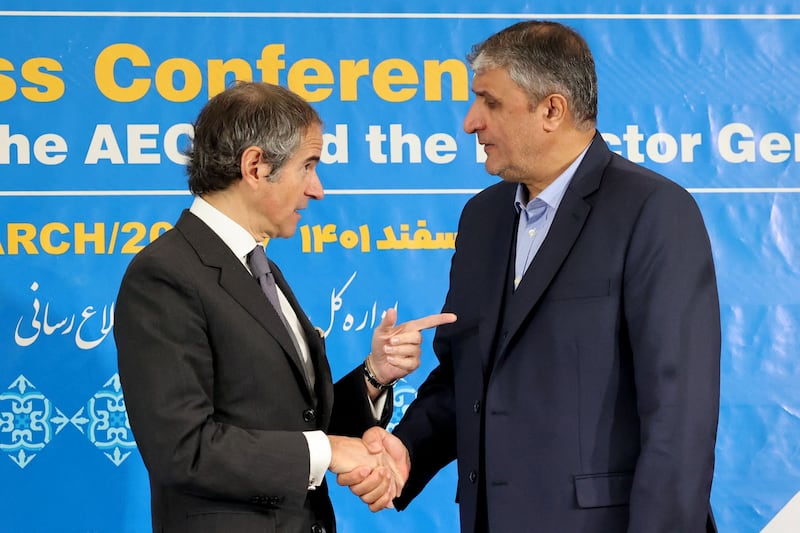
It is a dramatic departure from what Iran agreed to under the JCPOA and was complying with until a year after Trump abandoned the deal and imposed waves of sanctions on the republic.
If Iran can move quickly to produce enough material for multiple bombs, and move that material to covert sites, it’s much more challenging to disrupt that process.
Under the agreement, Iran was operating relatively basic centrifuges that are inefficient and prone to crashing; it was to enrich to no higher than 3.67 per cent – enough to fuel a nuclear power plant, and keep its enriched uranium stockpile at 300kg. Any excess was to be shipped offshore.
Today, it has multiple cascades of advanced centrifuges installed at its facilities, which enable it to enrich at a much faster rate, and a stockpile of more than 4,000kg of enriched uranium.
Iran has pledged to improve its co-operation with the IAEA in recent months, including allowing the watchdog to reinstall some cameras at sites. But the E3 said “incremental and limited steps are neither sufficient nor satisfactory”.
The long-running challenge for western diplomats has been gauging how serious Iran is about negotiations.
Tehran has twice rejected EU-brokered proposals since efforts to revive the JCPOA began after Biden took office, insisting on demands that western officials say were not realistic, such as a guarantee that no future US administration would be able to unilaterally abandon a deal.
The last diplomatic push ground to a halt in August. Iran then further infuriated the West by violently cracking down on protests that erupted in September, and shipping drones to Russia, plunging relations to new lows.
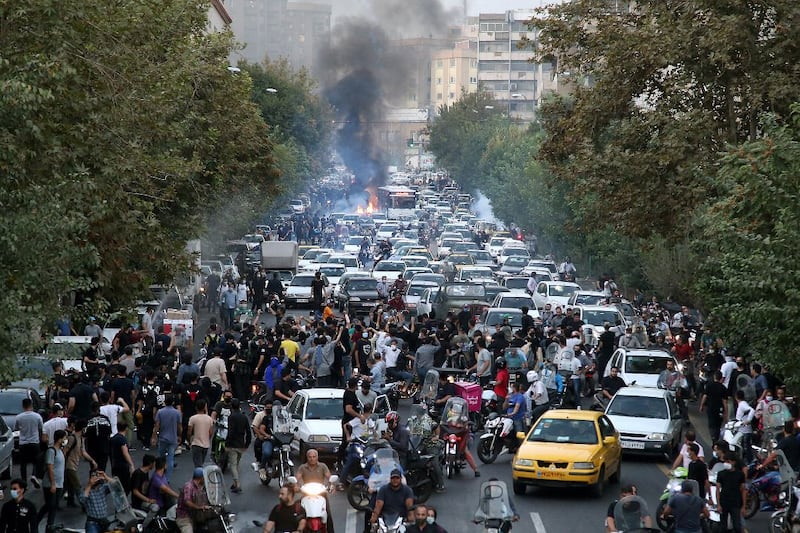
“We cannot trust Iran because for 20 years they haven’t been answering questions,” says another western diplomat. “They don’t have the capability today... [but] nobody knows if nuclear bombs will happen.”
‘A game of cat and mouse’
Tehran insists its nuclear programme is for civilian purposes – Ayatollah Ali Khamenei issued a fatwa in 2010 prohibiting nuclear weapons – and repeatedly says it favours a return to the JCPOA, but with additional guarantees.
In recent weeks, diplomats and analysts have been trying to decipher a series of speeches by Khamenei, the republic’s ultimate decision-maker, to identify whether there has been a change in tone.
Last month, he used the phrase “heroic flexibility” in a conversation with Iranian diplomats – the same phrase he used in 2013, months before Tehran signed an interim agreement with the US and other world powers, laying the foundations for the JCPOA.
But Khamenei also suggested hostility with the US would continue, and reiterated support for a 2020 parliamentary motion that endorsed the regime’s move to increase its nuclear activity.
The leaders who engineered the JCPOA in 2015 were pragmatists and are no longer in power. Today, all arms of the state are controlled by hardliners critical of the deal and ideologically opposed to engaging with the US.
Still, a regime insider says Khamenei is “setting the framework for a nuclear agreement”, citing a desire in Tehran to ease pressure on the sanction-strangled economy, and build on recent rapprochement with Arab rivals.
[ Trump denies knowledge of tape of him allegedly discussing plan to attack IranOpens in new window ]
“Iran is seeking de-escalation in its foreign policy. When reformists were in power, there was always a fear they would take matters into their own hands and push for normalisation with the US,” the insider says. “But now there is not that concern, as the political system is in the hands of hardliners.”
However, any deal would have to be based on the JCPOA, and Iran would set conditions, including it not “touching” nuclear infrastructure, the insider says, adding that “future promises” would not work.
“They must know now that they cannot put us under too much pressure any more. Should they not reach an agreement with Iran, we will get closer to a nuclear bomb,” the insider says.
Hossein Mousavian, a former senior Iranian official now at Princeton University, says if there is no deal there would be an escalation, with Iran enriching at 90 per cent, the west triggering snapback UN sanctions and Tehran suspending its membership of the Treaty of Non-Proliferation of Nuclear Weapons.
He still believes, however, that Iran is ready to revive the JCPOA, or reach a “less-for-less” deal in which Tehran reduces tensions and the US “closes its eyes” to oil and petrochemical exports.
When it rejected draft proposals in August, Iran was under the “illusion” that the Ukraine war would make Europe desperate for Iranian oil and gas, Mousavian says, increasing Tehran’s chance of securing a better deal.
But now Iran’s ruling hardliners want to deliver on the economy, he says. “Since 1997, we’ve always had two factions challenging each other, reformists blaming conservatives, conservatives blaming reformists. Now, everything is with the conservatives. The era of the blame game is over.”
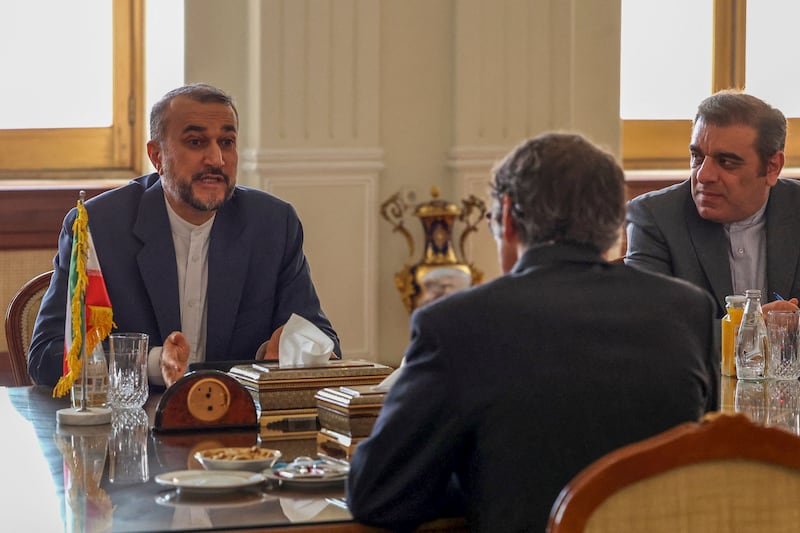
Tehran also has to strike some form of deal before next year’s parliamentary election, says Iranian analyst Saeed Laylaz, with the regime keen to ensure a reasonable turnout after just 49 per cent voted in the 2021 presidential poll.
The republic is desperate to encourage Iranians to vote as proof of its legitimacy after the protests, Laylaz says. “Something must be done to increase hope among people.”
The Iranians aren’t interested in the US or Europe feeling 100 per cent comfortable, because then they are going to forget about them
— Vali Nasr, Johns Hopkins University
Yet for more than two years, Iranian businessmen and reformists pinned their hopes on domestic pressures forcing hardliners to bite the bullet and reach an agreement with their US arch foe, only for their optimism to be dashed.
Vali Nasr, an Iranian-American academic at Johns Hopkins University, cautions that with the issue of the eventual succession to Khamenei (84), looming large over Iranian politics, “nobody including the supreme leader is going to take the political cost of another bad deal with the US”.
“It’s a case of fool me once, shame on you. Fool me twice, shame on me,” Nasr says. “The will on all sides, other than Israel, is to create a floor and put guardrails around it.”
But Tehran needs to maintain its aggressive nuclear programme “because it’s the only leverage they have”.
“The Iranians aren’t interested in the US or Europe feeling 100 per cent comfortable, because then they are going to forget about them,” Nasr adds. “We’re in a game of cat and mouse.”
Iran’s long-term goal
The key question for diplomats is whether the expansion of the nuclear programme is still simply about gaining leverage at the negotiating table, or has become part of a greater ambition.
Even if it is a negotiating tactic, the more advanced the programme becomes, the more Tehran is expected to demand in return for reversing its gains.
“As they accumulate more and more chips on the nuclear side, yes they could give some away, but it also moves them closer to what has arguably been the long-term goal – to be recognised as a nuclear threshold state,” says Rome of the Washington Institute for Near East Policy.
Time could also conspire against those hopeful of a resolution. In October, JCPOA clauses that impose sanctions on Iran’s ballistic missile programme expire, which could be difficult for the West to swallow, particularly if Iran is still supplying weapons to Russia.
The possibility of Trump returning to the White House in 2024, or another Iran hawk coming in, would be another destabilising factor.
“If there’s a Trump school of thought, then everything would be terminated; plan A, plan B, the JCPOA, [everything] but coercion or war,” Mousavian says. “The response would be: go for nuclear to reach a deal.”
Still, he predicts Iran would not seek to develop a weapon as long as Khamenei was supreme leader. “But nobody knows what could happen after.”
– Additional reporting by Laura Pitel in Berlin
– Copyright The Financial Times Limited 2023


















